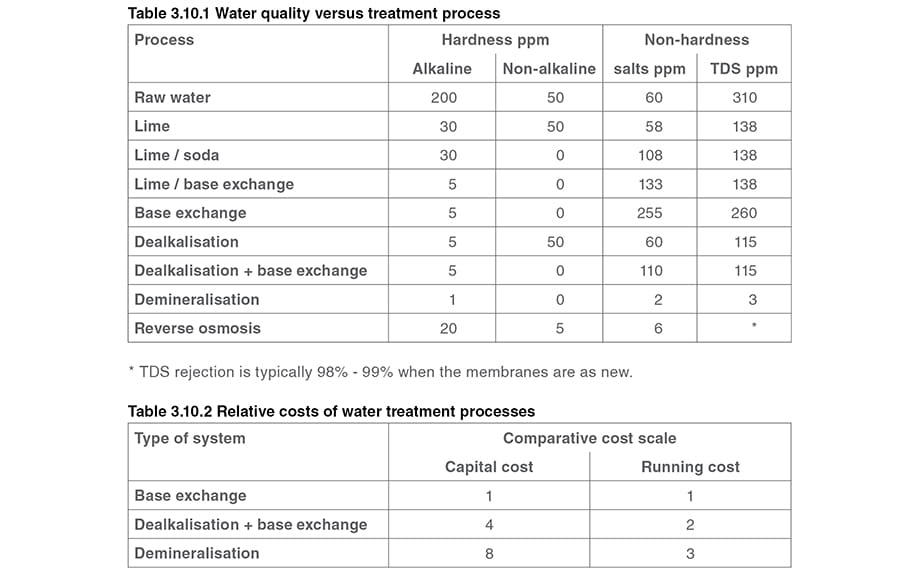The chloride test is used often in conjunction with the conductivity test to regulate boiler blowdown.
Boiler water hardness is increased by.
The main disadvantage of this deposited.
They accomplish this by locking metals into a soluble organic ring structure.
Total alkalinity ppm as caco 3.
These result from the precipitation in the boiler of feedwater hardness constituents due to heat and interaction of treatment chemicals and from corrosion products in the feedwater.
This causes a lot of damage and increased maintenance.
How many times the mineral content which stays in the boiler when steam is produced of the raw water has been concentrated or built up in the boiler.
Contamination of the surfaces of control valves this will affect their operation and reduce their capacity.
Then boiler setpoints were reduced to increase the rate of solids removal and encourage increased soft water makeup into the boiler system until all traces of hardness were no longer entering the boiler feed water system.
Leading to increased carryover.
Silica ppm sio 2 lt.
The chelated cations do not deposit in the boiler.
If you use a boiler to heat your home throughout the most bitterly cold time of the year then you don t need us to tell you just how successful an endeavor this can be.
Carry over is boiler water that leaves the boiler in the steam but is still water.
Therefore chlorides are used as a measure of boiler water concentrations i e.
Today we are looking at how to conduct a water hardness test to check the water going to the boiler.
It carries impurities such as dissolved solids with it.
These impurities leave deposits around the steam system.
Untreated water even water coming from a municipal water utility can contain dissolved salts which form scale on the heat transfer surfaces as the water is heated.
If the impurities in the boiler feedwater are not dealt with properly carryover of boiler water into the steam system can occur.
This may lead to problems elsewhere in the steam system such as.

